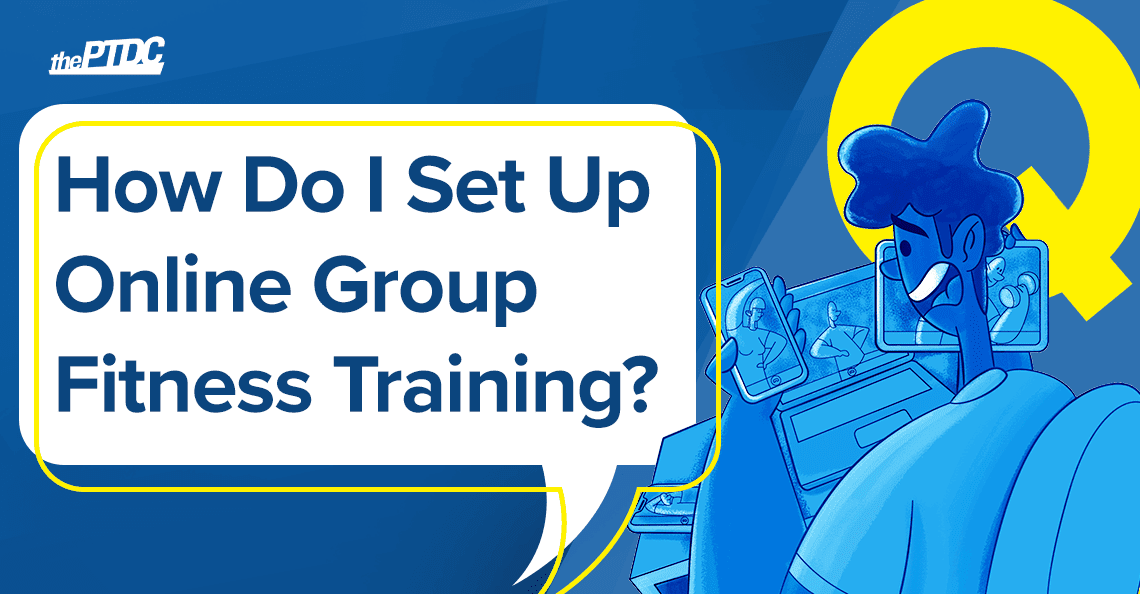
There are five basic steps for setting up online group fitness training. Let me take you through them.
1. Focus on one market, one goal
The first thing to ask yourself is:
“What’s the market? What’s the goal?”
Once you define this, you’ll have a pretty good idea of the type of people you’re after and the type of program you need to build.
Then as you go deeper, you’ll start to figure out what your clients’ inner dialogues are, why they want to do this, and who they want to become.
What do they enjoy?
What don’t they like to do?
What are they willing to sacrifice (or not sacrifice) to reach their goal?
And all that information, of course, will feed your marketing as well as your programming and coaching.
Now you could absolutely have two different groups—two different markets with two different goals—but you probably won’t be as efficient.
Plus, if you have a group chat, community, or forum, having clients with different goals in the same group can create a lot of issues and frictions. For example, some people may not be as honest and forthcoming with information in the forum because they know others are there who they won’t be able to connect with.
2. Create a template
With your target market and goal in mind, build a single templated program.
I get a lot of kickback when I recommend templates. But if you’ve put the time and effort into Step 1, you know your market’s starting point, its commonalities, its capabilities, and its goal.
The next logical thing to do is build the best 4-, 8-, 12-, or 16-week program for that group.
Think of it this way: If you build the absolute best program for your ideal client, there’s no reason to build another one from scratch because that would be the second-best one, right?
So build a template.
3. Allow for individualization
Having a template doesn’t mean your program will never change. As you gain experience and more clients come in, their feedback will enable you to improve upon that template overall and also individualize it to meet unique needs.
And eventually, if the time comes to expand your business and hire coaches, you’ll be able to use that template to easily delegate the work.
So start with a template that you can individualize as needed. Otherwise, it’s going to be a complete crapshoot.
Some clients may get a good program if you’re feeling good the day you’re writing it, but some might not if you’re feeling rushed or have other things on your mind.
Leave as little to chance as possible.
4. Build an FAQ
This is the easiest step. Every time someone asks a question, direct your answer to that individual but also respond in a general way that can benefit a wider audience.
For example, say you’re training busy, middle-aged guys with full-time jobs and families, and one of your clients asks specifically about lunch-hour workouts.
Respond directly to him and his situation but also present the information in a way that’s beneficial to anyone who’s time crunched.
Before long you’ll amass a bunch of Q-and-As like this, which will enable anyone starting your program to quickly get up to speed.
An FAQ is a real asset for your business.
5. Offer the right kind of support
Whether or not to build a group community is a good question that I think a lot about.
For most markets, I actually don’t think it’s a very good thing. We have enough online communities these days. I don’t think anybody wants to be in another Facebook group.
And if you’re trying to host your community on some special software, nobody wants another program they have to check.
In general, when you’re just starting out, your community is also going to be pretty quiet—that’s not fun for anybody, and the optics are really bad for you. It’s just not a good feel. It sucks the energy out.
Instead, I love the idea of a group chat.
You can use a messaging function like WhatsApp, or go with an encrypted service like Telegram or Signal.
What’s really neat is that you can create a group chat with all your people, or you can have individual chats. You can send a message to the group at once, or create individual chats with each person or with smaller groups.
Group chats are great, too, because often a community forms where your clients start answering questions for other clients quicker than you can.
It makes supporting a group a lot easier and more efficient.
Bottom line: These are the nuts and bolts of setting up online group fitness training.
The main idea is to start with one market and one goal. That’s key.
Once you do that, everything else will fall into place.
Learn more: Get answers to more online trainer questions.










